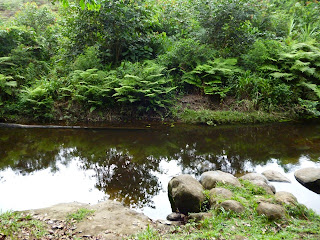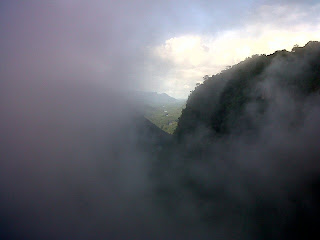And the spot is definitely Kopinang. The most amazing village I have been to in Guyana. Why?
An Orange is an Orange and an orange is Orange
Oranges and tangerines are actually orange and as juicy as drinking juice right out of the fruit itself. This as opposed to the green and dry fruits we get around the rest of the country.
Initiative
People are getting out there and working hard for the improvement of their lives. I saw an active PTA (Parent/Teacher Association) fixing the school's roof and building extra latrines around the school, with money they had fundraised and/or invested themselves.
The School Feeding Programme is a World Bank funded project that provides a hot meal a day for every child in the hinterland schools which applied for this programme. It's more of a match funding project and the WB is preparing to pull out next year from reports I heard. Does this mean children will stop getting a hot meal every day? Yes, in most cases, I'm afraid. Certainly not the case at Kopinang Primary School. The committee has everything sorted out or underway.
Some good old play a day keeps the doctor away
Ignoring the fact that I was fascinated by the idea of having a toilet, a shower and a kitchen with running water, I was so delighted by the rocky creek just below the house, that I ended up never using the shower.
Every morning I'd go for a bath in the creek and most of the days children would be swimming, paddling up and downstream in their miniature canoes, before heading out to school.
One of the many things I've learned in this wonderful country is how important it is to slow down. Back at home, children are rushed out of bed early in the morning after a late night watching TV, playing video games or facebooking, whereas here (and mainly in remote areas, due to the non existence of electricity) children go to bed early, which means they get up naturally with the sunrise and end up having time to play, bathe and have fun before going to school.
If at home I used to try to beat my "up and out" record, having made it in 30 minutes, minimum time (this is from the moment the alarm rings to the moment you put your foot out of the door), here in Guyana it takes me about three hours. Yeah, not one, not two, but three!
How shocked are you, dear friends from home? And I suppose you're wondering what on Earth might I do during that time. Easy: I go for a jog or a walk, have a shower, do my laundry, eat a slow breakfast and read for fun.
So, here's to slowing down and savouring each moment!




































